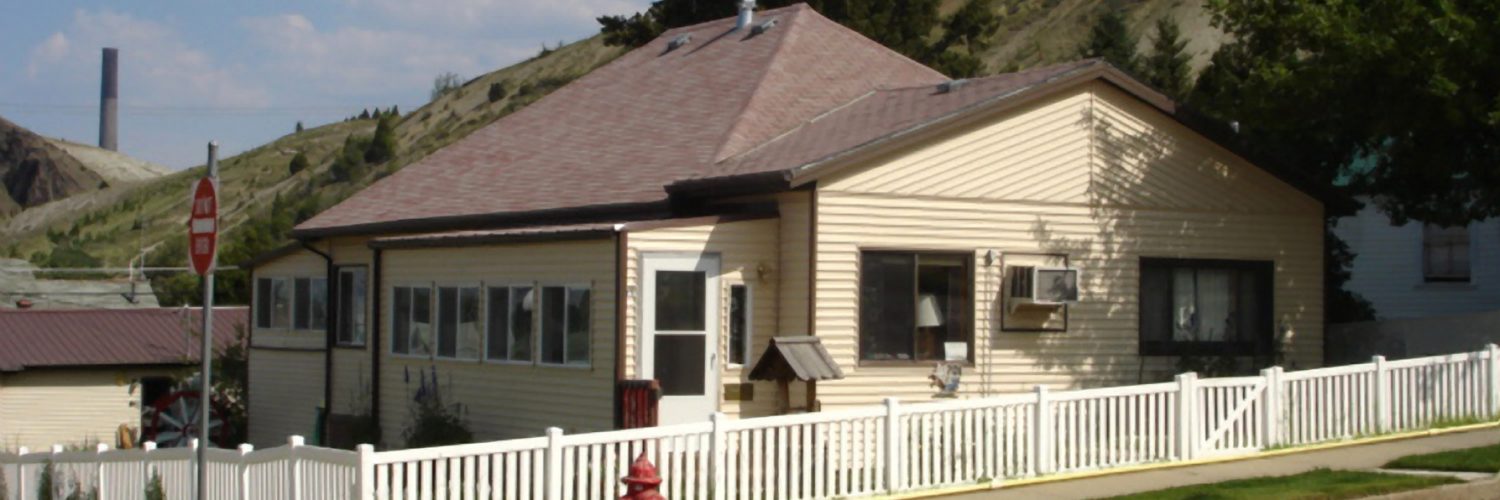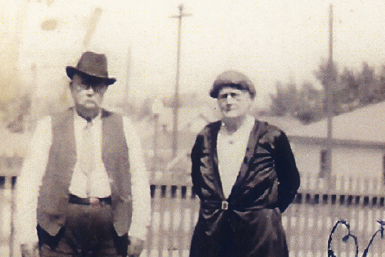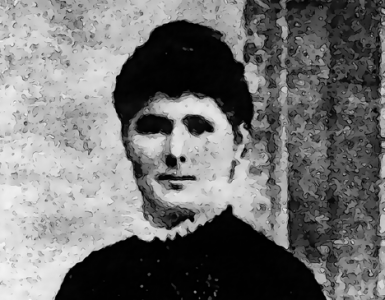by Jerry Ross
First published in November/December, 2008, Volume 5, Issue 4, The Hatchet: Journal of Lizzie Borden Studies.
The details of Bridget’s life and the dates of her whereabouts are complex and contradictory. After Lizzie Borden’s trial for the murder of her father and stepmother, Bridget Sullivan, the family’s maid, and the only other person in the home at the time of the murders, may have returned to Ireland in 1893 or 1894, before relocating to Anaconda, Montana, sometime after 1896.
Working from newspaper articles written after her death, and the bits and pieces of information culled from Leonard Rebello’s Lizzie Borden Past & Present, I decided to visit the places where Bridget lived and possibly worked.
According to Rebello, Sullivan was working as a domestic in Anaconda, Montana, by 1897:
A marriage certificate, dated 1905, was issued to John M. Sullivan and Bridget Sullivan. The marriage took place on June 21, 1905, at St. Paul’s Church by Father J. M. O’Brien. . . . [John] came to the United States in 1888 and became a citizen in 1896. (1920 Federal Census) He was listed in the Anaconda City Directory in 1896. John Sullivan was a laborer, puncher and converter, furnace man, smelterman and later a helper for the Anaconda Copper Mining Company. . . . The Sullivans resided at various locations while in Anaconda. They purchased a home on Alder Street in 1915. Mr. Sullivan died at St. Ann’s Hospital, March 12, 1939. He had been a resident of Anaconda for fifty years. He was buried at Mount Olivet Cemetery in Anaconda [66].
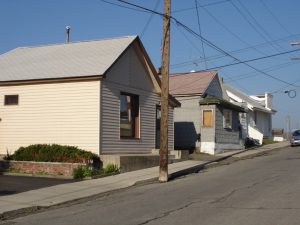
Bridget moved to Butte, Montana, in 1942, and was living with relatives at 112 East Woolman Street at the time of her death in the local hospital, 25 March 1948. The cause of death was cardiac failure, due to arteriosclerosis, and senility. Bridget, for reasons unknown, was blind at the time of her death. She is buried at Mount Olivet Cemetery in Anaconda, Montana.
I recently rook a road trip from my home in Las Vegas to see what I could uncover about Bridget Sullivan’s life in the small remote mining town that lies twenty-four miles west of Butte.
Currently, Anaconda has a population of under 10,000, which contrasts to the roughly 2,000 that lived in the city in the early 1900s. Anaconda has two major thoroughfares, Park and Commercial, which run parallel to one another, with Main Street bisecting both and dividing the town into a western and eastern section. The eastern section is older and contains many small homes built very close together. A majority of these homes date back to the 1920s and earlier. The homes were built to provide accommodations for the large amount of workers entering the area to work in the smelter. The western side of town is relatively newer, with larger and more upscale homes.

Anaconda, founded by Marcus Daly and named for the copper company that first brought residents to the area, runs about three miles east to west and one mile north to south, and contains two supermarkets, one library, one movie theatre, and no bookstores.
Anaconda’s main attraction is the 585-foot smelter stack, which is considered one of the largest free standing masonry structures in the world. The other site of interest is the Washoe Theatre that shares the distinction with the New York City’s Radio City Music Hall as being the last of two theatre palaces designed in the Art Deco style. Rather plain on the outside, the Washoe’s interior is fabulous! It still serves as a movie theater with over 1,000 seats and shows first run features for an admission price of only $4.00. The Washoe Theatre is listed on the National Register of Historic Places.
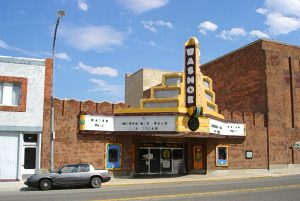
After checking in at one the few motels in Anaconda, I went to the visitor’s center and later took advantage of the ninety-minute city tour, conducted aboard a vintage 1936 bus. The manager of the visitor’s center was aware of Bridget Sullivan, however, and indicated that I was not the first to inquire about her. The tour driver, on the other hand, had no idea who Bridget Sullivan was and had never heard of Lizzie Borden. The tour showcased the many interesting architectural aspects of the city.
I know from my reading that Bridget had once resided at 412 Monroe Street in the eastern part of the city. I attempted to locate this house, but could only find 414 Monroe. This house probably dated back to the early 1900s. Number 412 seems to have been torn down, and a neighbor was building an extension to his property on that site. The house that Bridget had lived in no longer exists.
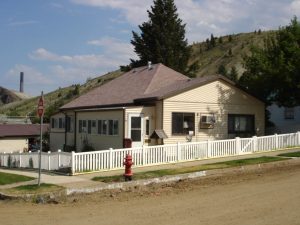
I then walked to 701 Alder Street, where Bridget moved with her husband John after they married. I was pleasantly surprised to find a well-kept, spacious house. I spoke to the owners who were well aware of their home’s provenance. It seems that others before me and come to this location and inquired about the maid from Fall River.
I then walked west six blocks and turned right to 510 Main Street, to the home of Alice and George Winston, where I had read that Bridget was employed as a domestic. As I took this short trip, I imagined Bridget making the same walk. The streets are narrow and tree-lined, and must have been quite pleasant in the summer—but less so in the snowy winter.
I noted that there is a plaque in the front yard of this house, erected by the Montana Historical Society. It described George Winston (1861-1936) as one of Anaconda’s most prominent citizens. He was its first City Attorney, and was one of the authors of the Montana State Constitution.
The plaque also states that the Winston’s maid was the same Bridget Sullivan who was involved in the Lizzie Borden case. Interestingly, it goes on to state that “Sullivan was a key witness in the trial . . . The maid never spoke of the crime, but reportedly confessed on her deathbed in 1948 that Lizzie, who was acquitted, paid Sullivan for her evasive testimony.” I wonder where the Historical Society got that information!
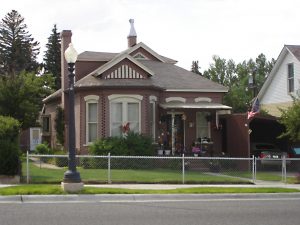
Bridget Sullivan had married John Sullivan (1868-1939) in 1905, in St. Paul’s Church at 218 E. Park Street. The church was torn down in 1978, but the rectory, which sat next to the church, exists today and is now a bed and breakfast. Photographs show little change in its appearance from the early 1900s to the present.
I proceeded to the small Anaconda Historical Museum. It is located in the basement of the old City Hall building, which now houses the Copper Village Museum and Arts Center. Posted on the wall, I found a picture of Bridget, along with a caption stating, “Bridget was a suspect at one time . . . In 1985, Anaconda police officer Tim “Sox” Sullivan, Bridget’s nephew, was murdered in the line of duty.” The photo on the wall was the same image of Bridget that we all know. I asked the curator if he was aware of any other photos. He said, “No. I got that one out of a book.”
The next day I visited the Hearst Free Library. This impressive two-story structure was built and donated to the city by copper mining owner Phoebe Hearst, mother of William Randolph Hearst. It was completed in 1898, and remains open to this day. I spoke to two librarians and they both had no knowledge of Bridget. They pointed out the true crime section of the collection, which I found consisted of two shelves. There I did find a copy of Goodbye Lizzie Borden by Robert Sullivan.
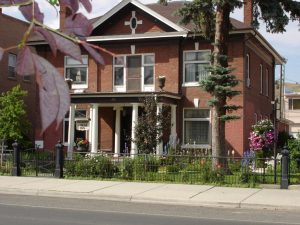
The Washoe Theatre, the Winston residence, and the Library are all within one block of each other. It is reasonable to assume that Bridget visited the Library and, perhaps on her day off or after work, attended a movie with her husband or friends.
The next morning I went to Mount Olivet Cemetery—one of the three cemeteries that the city maintains. This one is located on the western side of town.
The cemetery is relatively small, but well kept. It slopes gently south toward the looming tree-covered mountains. I had no idea where Bridget Sullivan’s grave was located, so I just started walking row by row. I then came across a gray marble marker:
“SULLIVAN”
JOHN M BRIDGET
1868-1939 1869-1948
I thought for a few moments about her life after Fall River. It appears she had a long marriage, lasting thirty-four years, and only ending upon John’s death. We know she had friends and relatives living in Anaconda and Butte. We know of Minnie Green, who was her long time friend, and that Bridget worked many years for one the town’s most prominent citizens. Yet, she never spoke of her role in the Lizzie Borden case after leaving Fall River. We can assume that only her husband and a few close friends were told of that part of her life. It would appear that Bridget was able to put that episode behind her and lead a long and happy life.
I then traveled to Butte to see where Bridget had lived the last six years of her life. After the death of John, she moved in with a niece named Mary Sullivan. Records show that they lived at 112 East Woolman Street. I found East Woolman to be a small street with only five houses and some empty lots. Two of the houses appear to have been recently built and the other three were definitely older, and abandoned and/or for sale. Unfortunately, none of the houses had a street number on them. It is possible one of the three older homes was the final residence of Bridget Sullivan.
Most of what we know about the Andrew J. Borden household came from Bridget’s testimony. Imagine what else we could have discovered if only some enterprising journalist had located Bridget and asked the questions we all would like answered.
We only know of one photo of Bridget. What about wedding pictures? Surely, pictures were taken during her lifetime of her husband and friends. She had, and still has, relatives in Montana. Perhaps an old photo album is out there. It would be marvelous to see a picture of John and Bridget together.
Before leaving Anaconda, I placed some flowers at their graves.


